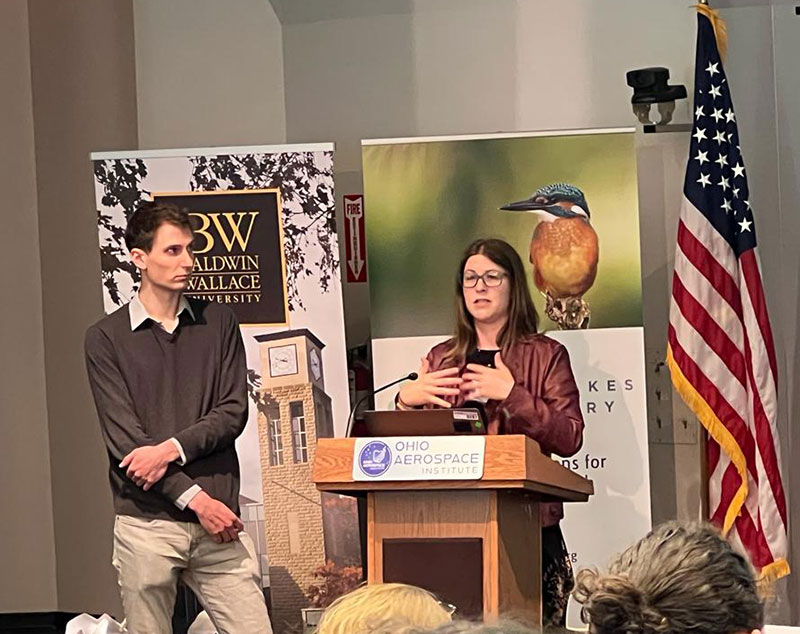Engineer Elena Stachew is a Biomimicry PhD candidate at the University of Akron. Through a unique partnership, as Biomimicry Fellow with Biohabitats, the Ohio Department of Natural Resources’ Office of Coastal Management, and the Cleveland Water Alliance, she is able to apply what she is learning toward the development of solutions for protecting and restoring the stability and function of urban shorelines.
What exactly is biomimicry? Elena explains.
Elena is specifically looking at the Ohio shoreline of Lake Erie, the most altered, urbanized shoreline of all of the Great Lakes. (80% of the shoreline is protected with concrete, rock, or steel.) Along such hardened edges, especially where there is a great deal of built infrastructure and shipping traffic, natural solutions like living shorelines are not viable options. To address this challenge, Elena is studying and generating 3-D models of the root structures of riparian trees native to the Lake Erie watershed. She believes these structures could serve as models for a new type of engineered coastal infrastructure that could also provide some ecological functionality. Elena recognized rootwads as model for urban shoreline infrastructure because “trees that grow along streams, rivers, and freshwater lakes are adapted to need to be embedded in the soil so they don’t erode away.”
As Elena explains, the use of hardened engineering structures along the shoreline creates a cyclical problem. The more we put engineered structures on our shorelines, the more problems occur downstream or on adjacent property, and the more people once again turn to engineered structures. Stachew sees her work as having the potential to break that cycle.
“Say you are trying to move toward a nature-based solution on a piece of shoreline but you can’t get there yet because the wave energy is too intense and the water is too deep,” she says. “My solution might be applied in that middle ground space. That could help establish conditions where more vegetation can thrive and the water becomes calmer. Then, you could move to a nature-based solution.”
Although her study pertains to Lake Erie, Elena believes it may have applications throughout the Great Lakes or in any freshwater lake. Stachew’s colleague and fellow PhD candidate, architect Thibauld Houette, is looking at root structures for building foundations. “Foundations take up a a lot of space and compact soil so it becomes less permeable,” she says. “A root system, on the other hand, takes up less space in the soil and you still get the same structural benefits because of it’s branched redundancy,” says Elena. “With a root-like foundation holding up a building, you can break up that compaction and enable water to permeate through the soil, which could help with runoff and flooding.”

Elena and Thibaud are enthused about the promise of their work, and they are eager to share it. In addition to publishing their research, Elena and Thibaud have created videos about their work for the University of Akron, spoken to reporters, and delivered presentations at several conferences. Their work was even featured as part of a research exhibit at the Cleveland Museum of Natural History earlier this summer.
Elena also points out the power of biomimicry to bring new supporters in to conservation and restoration:
We plan to provide updates on Elena’s work right here on the Rhizome blog, so stay tuned! In the meantime, Elena encourages anyone interested in biomimicry to learn more by visiting the Biomimicry Institute and reading Janine Benyus’ book Biomimicry: Innovation Inspired by Nature.
